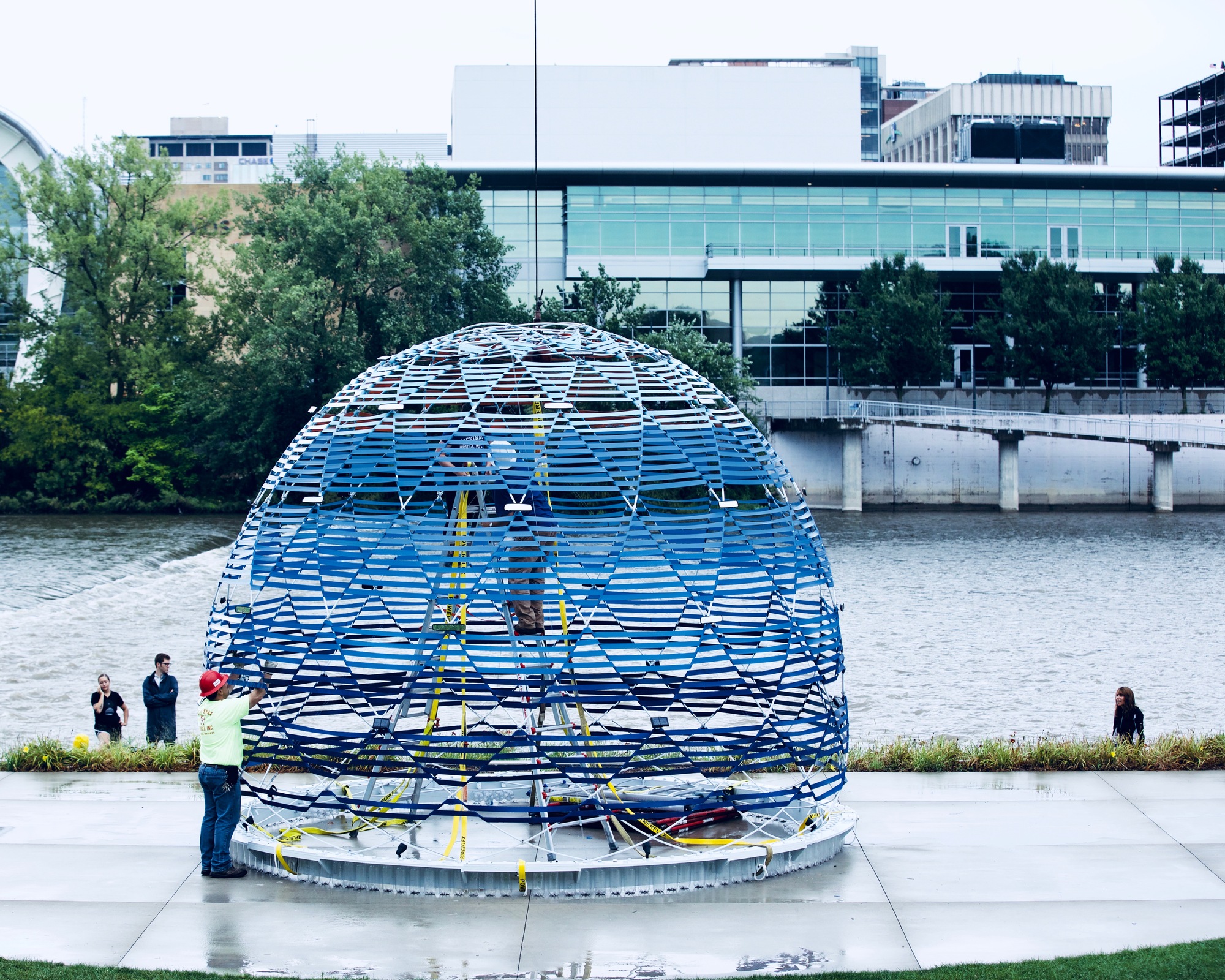A giant dome, made from seatbelts and mirrors bobs up and down the Grand River in Grand Rapids, Michigan. Amanda Schachter and Alexander Levi—the husband and wife team of SLO Architecture, built the Harvest Dome 3.0.
SLO Architecture’s series of Harvest Domes are made from locally sourced and repurposed materials. The previous buoyant installation, dubbed Harvest Dome 2.0, was released in New York City waters in 2013. It had a 24-foot-diameter, and it was made out of 450 reclaimed umbrellas floating over 128 soda bottles. The purpose of the Harvest Dome 2.0 was to reveal the recurring cycle of tides at the northern tip of Manhattan.

Harvest Dome 3.0. Image © SLO Architecture
The Materials of The Harvest Dome in Grand Rapids, Michigan:
The Harvest Dome 3.0, on the other hand, is made of materials sourced from the Grand Rapids industry—seatbelts, rearview mirrors, and soda bottles. The massive dome-shaped installation celebrates the heritage of the riparian city as well as the legacy of the city’s manufacturing industry.
The dome measures 20 feet in diameter and is made of 128 two-liter soda bottles and brightly colored seatbelts. Designed to draw attention to the Grand River, the Harvest Dome 3.0 is sometimes called a work of “performance architecture”.

Harvest Dome 3.0. Image © SLO Architecture
“While the river’s energy propelled Grand Rapids to become a center for logging, furniture fabrication, and automotive industries, the possibility of the river also engendered changes to landscape ecology, leading to flooding and contamination,” revealed the architects about their latest project.
“The transcendent abstract form of Harvest Dome 3.0 emerges from a flotsam of accumulated materials, its bright blue seatbelt lines and sky-and-water-reflecting rearview mirrors shimmering like a bubble coming up from the surging rapids, transfiguring the river’s power and possibility.”

Harvest Dome 3.0. Image © SLO Architecture
Their work links architectural design with urban design and art. It brings together people from different industries and from different realms of life. Local practitioners, public officials, youth, and many others come together to create these installations that make the local citizens sit up and demand action.
SLO, with its public projects, wants to reforge the links between the natural ecosystems while amplifying the environment-related social and artistic ambitions of the neighborhoods. They seek to garner attention to improve the waterways that remain forgotten between the infrastructure, the industries, and the hustle and bustle of the city life.

